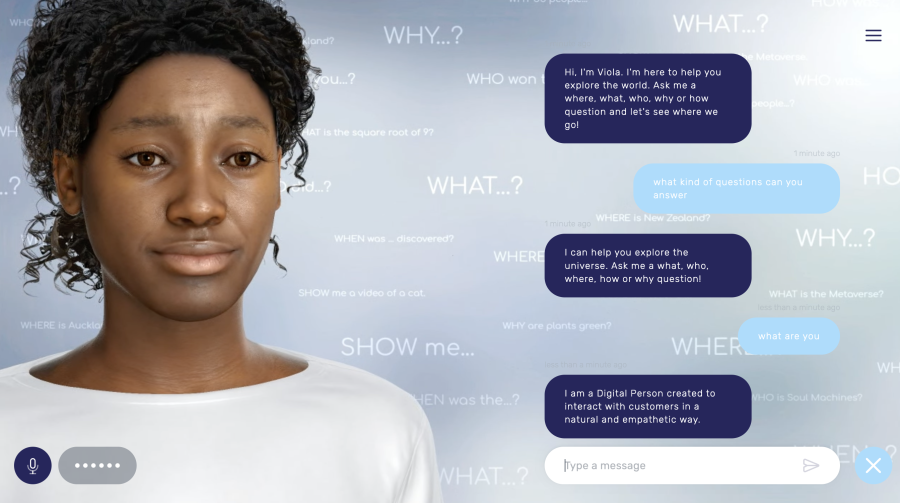Welcome to the Era of Emotionally Intelligent AI
Let’s be real—nobody wants to talk to a robot that feels like a robot. Customers crave empathy, understanding, and meaningful conversations—even when chatting with virtual agents.
And guess what? Conversational AI Agent 2.0 is making that possible.
Thanks to major advancements in natural language processing (NLP), sentiment analysis, and emotional intelligence modeling, today’s AI-powered bots are learning not just what customers say, but how they feel when they say it.

In this blog, we’re exploring how emotionally intelligent virtual Ai agents are transforming the customer experience (CX) landscape—and why this matters more than ever.
What Is Emotional Intelligence in AI?
Emotional intelligence in humans is our ability to recognize, understand, and respond to emotions—both ours and others’. When AI tools mimic this behavior, they become emotionally intelligent virtual agents.

These agents don’t just provide canned answers. They:
- Detect emotional cues in tone and text
- Adjust responses based on mood and urgency
- Learn context from previous conversations
- Deliver personalized, empathetic replies
The result? More human, more he
How AI Detects Tone, Mood & Urgency
Modern conversational AI tools combine machine learning, sentiment analysis, and contextual awareness to read between the lines.

Here’s how it works:
1. Sentiment Analysis
AI scans messages for emotional tone—positive, neutral, or negative—by analyzing:
- Word choice
- Punctuation (!?!?!),
- Emojis 😩🙌
- Message length and structure
Example: A message like “Seriously? I’ve been waiting 3 days!” triggers urgency and frustration.
2. Voice & Tone Recognition
In voice-based interactions, AI can detect vocal cues such as:
- Pitch changes
- Speech speed
- Pauses and interruptions
These signals indicate stress, impatience, or satisfaction.
3. Contextual Learning
Using NLP and past data, AI understands:
- The customer’s history (e.g., repeated issues)
- Previous resolutions
- Brand sentiment and product feedback
Armed with this, bots can tailor their tone and choose the most helpful next step.
Tools Leading the Way in Emotional AI
Let’s talk tech! Here are some of the most innovative platforms enabling emotionally intelligent CX:
IBM Watson Assistant

Known for its powerful NLP engine, Watson uses advanced tone analysis to understand customer intent and emotion. It can detect frustration and escalate conversations to human agents when needed.
Soul Machines

This is where things get sci-fi! Soul Machines builds digital humans—AI avatars with facial expressions, voice modulation, and real-time emotional reactions. Perfect for high-touch customer support, especially in banking, healthcare, and education.
Replika

Originally designed as a personal AI companion, Replika uses emotional tracking to offer hyper-personalized conversations. Brands are now exploring Replika-style bots for customer-facing roles where empathy is key.
LivePerson

Blending real-time conversation with AI insights, LivePerson’s Emotion AI measures customer sentiment during chats and helps human agents respond appropriately. This creates a seamless human-bot hybrid experience.
Impact on CX Teams & KPIs
Emotionally intelligent AI doesn’t just sound cool—it delivers results. Here’s how:
1. Better Customer Satisfaction (CSAT)
When customers feel understood, they’re happier. Empathetic bots improve CSAT scores by offering relevant, emotionally aware responses.
2. Faster Issue Resolution
By detecting urgency early, AI agents can escalate high-priority cases instantly—reducing response times and boosting first-contact resolution (FCR) rates.
3. Reduced Agent Burnout
AI can handle emotionally charged or repetitive conversations, freeing up human agents to focus on high-value interactions.
4. Smarter Training & Coaching
Many platforms provide real-time emotion insights to human agents, helping them improve their communication and empathy in live conversations.
Real-World Examples
Banking
A major financial institution uses Watson to detect anxious tones in calls related to loan rejections. When flagged, these calls are rerouted to senior agents trained in empathy and resolution.
E-commerce
A global online retailer implemented Replika-style bots for product returns. Instead of a cold script, the bot acknowledges frustration, offers apologies, and proactively suggests faster refund options.
Healthcare
In telehealth, Soul Machines’ digital humans guide patients through intake forms, showing facial expressions like concern or reassurance to comfort nervous patients.
These aren’t futuristic case studies—they’re happening right now.
The Future: Where Is Emotional AI Headed?
Hold on tight, because the next generation of emotionally intelligent bots is going to be even more mind-blowing.
AI That “Feels” Empathy
We’re not talking consciousness, but emotion simulation. Imagine a bot that mirrors a customer’s tone with appropriate emotion—so if you’re sad, it offers comfort; if you’re excited, it shares your joy.
Omnichannel Emotion Tracking
Soon, AI will track emotional sentiment across email, social, chat, and calls—creating unified emotional profiles that help brands respond with total context.
AR & VR Integration
Picture emotionally intelligent bots inside virtual showrooms or service hubs—guiding customers with voice, body language, and emotional responsiveness. Yep, it’s coming.
Conclusion: Emotion Is the Secret Sauce of CX
AI has come a long way from robotic scripts and rigid chat flows. With Conversational AI 2.0, we’re entering an age where bots understand us—our feelings, frustrations, and needs.
And that changes everything.
Emotionally intelligent virtual agents don’t just improve efficiency—they build trust, foster loyalty, and deliver deeply human experiences at scale.
If you’re serious about leveling up your customer experience, it’s time to stop asking if AI is human enough—and start asking how human your AI can become.
Research on Emotional AI and Customer Experience
➤ https://hbr.org/2023/06/the-future-of-customer-service-is-emotionally-intelligent
Add a Comment